What a great weekend of races and car watching at Fuji Speedway! And all Minis. Classic Minis, Minis, Minis everywhere. Austin minis, Rover Minis, Morris versions and Riley Elfs and Wolseley Hornets; and not a BMW Mini anywhere in sight.
It was the Classic Mini Festival celebrating 60 Years of the Mini, and Minis were everywhere. Everywhere! And as a fan of the classic Mini I was in Seventh Heaven. And I was everywhere, too: In the racing pits, at First Corner, up on the roof, down in the parking lot wandering among the wonderful cars there, and at the track side as the racing Minis screamed past us. That is the way to spend a late summer weekend in Japan. Living close to Fuji Speedway is Top Dog to me.
And this is the view that greeted us when we arrived at the speedway:
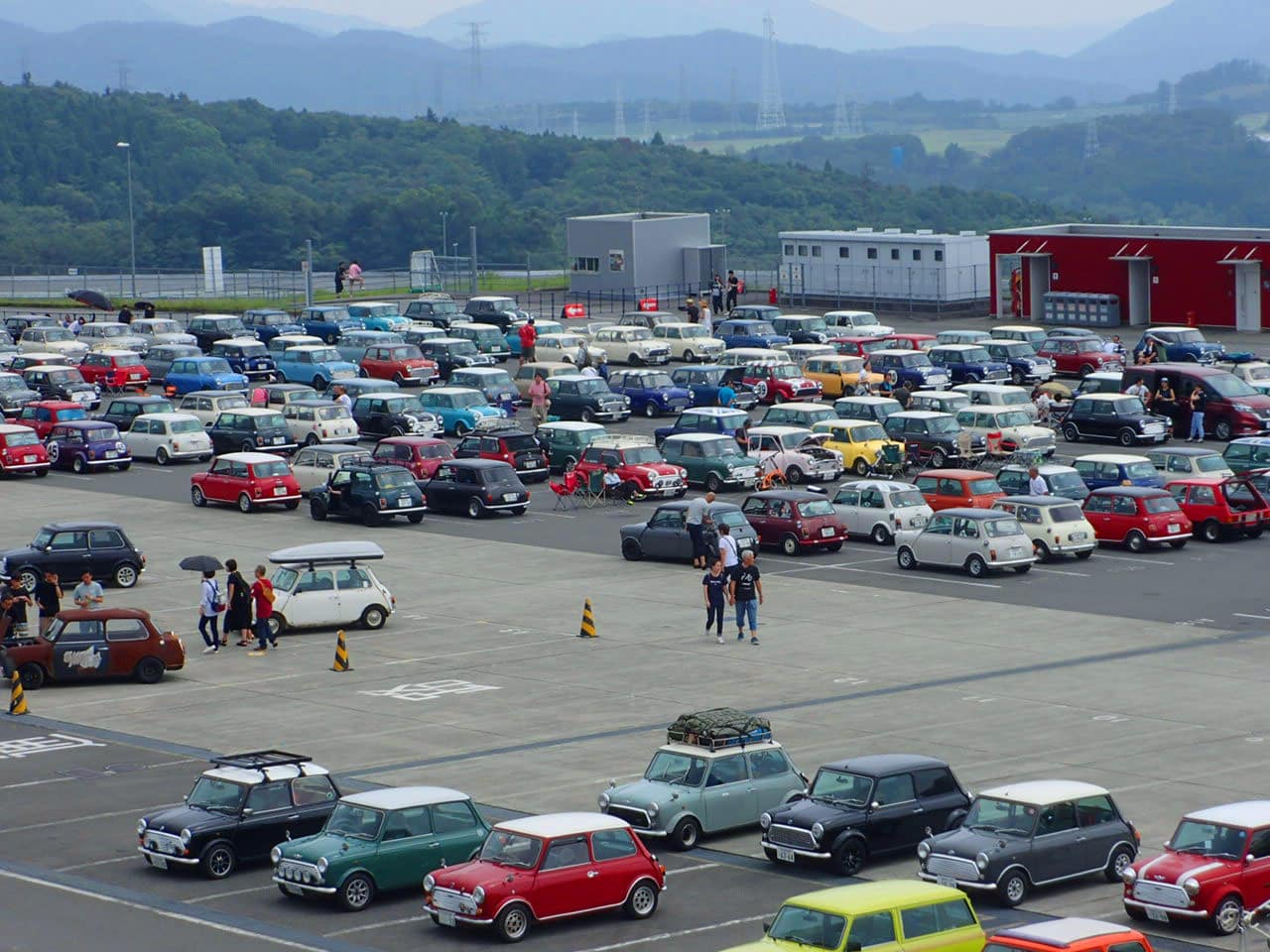
But all the way to the speedway that morning we’d been seeing more and more Classic Minis.
Many Classic Minis in Japan Today
I do a lot of driving as part of my job and I would say that I see at least one Mini everyday here in Japan and they are always in very good shape, and often with excellent mods: center mounted wide bore exhausts, wide tires, and extended wheel arches, not to mention tasteful and very clean paint schemes. And the sound of those tuned exhausts on a 1.3 Mini Cooper: that sound just warms the blood and brings a smile to my face every time a Classic Mini zooms past me on the road.
And I’m thinking now about how, when I first came from Canada, with its wide roads, to Japan, with its narrow roads (and this is yeeeeaaaars back, guys, back when the Classic Mini was still in production) I thought to myself: “The Mini is the perfect car for Japan.” The original Mini is super compact, super maneuverable, and, especially with the 1.3 injection engine, decently quick. (But don’t, if you are thinking of importing a nice clean classic Mini from Japan, write off the 1.0 liter cars. The 997cc Mini I had in England was a quick enough little unit, and, with its wide tires, cornered like it was on rails.)
Japanese motoring fans took the Mini to their hearts and have kept it there ever since.
Minis Tuned for Track and Street
And they race these things, too. And mod them like you wouldn’t believe.
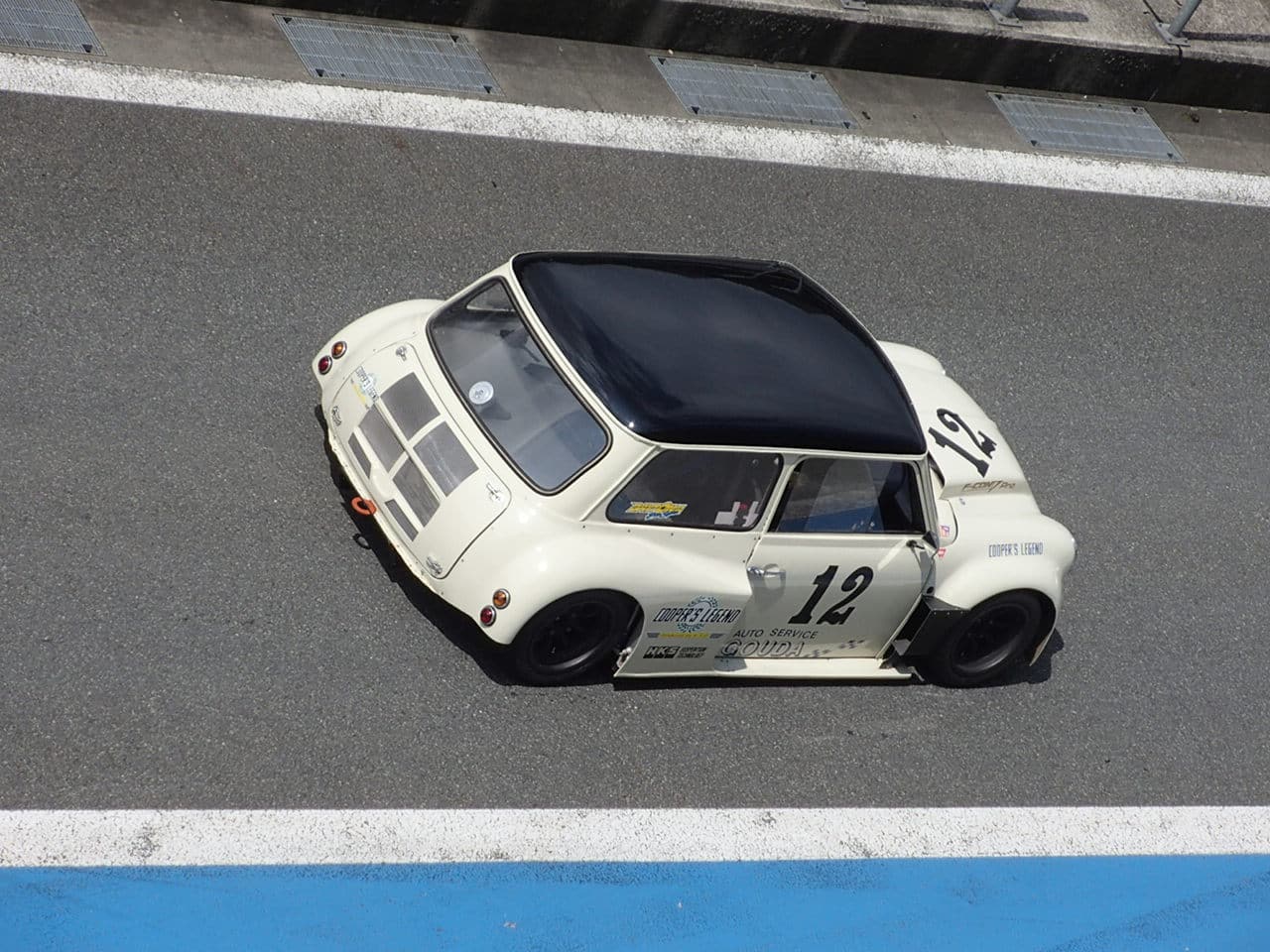
OLYMPUS DIGITAL CAMERA
The highly modified racing Minis were one of the high points of this Classic Mini Festival weekend. Let me show you two of the cars that raced in the unlimited class.
The track-only Mini in the above photo, car number 12, had this under the bonnet:
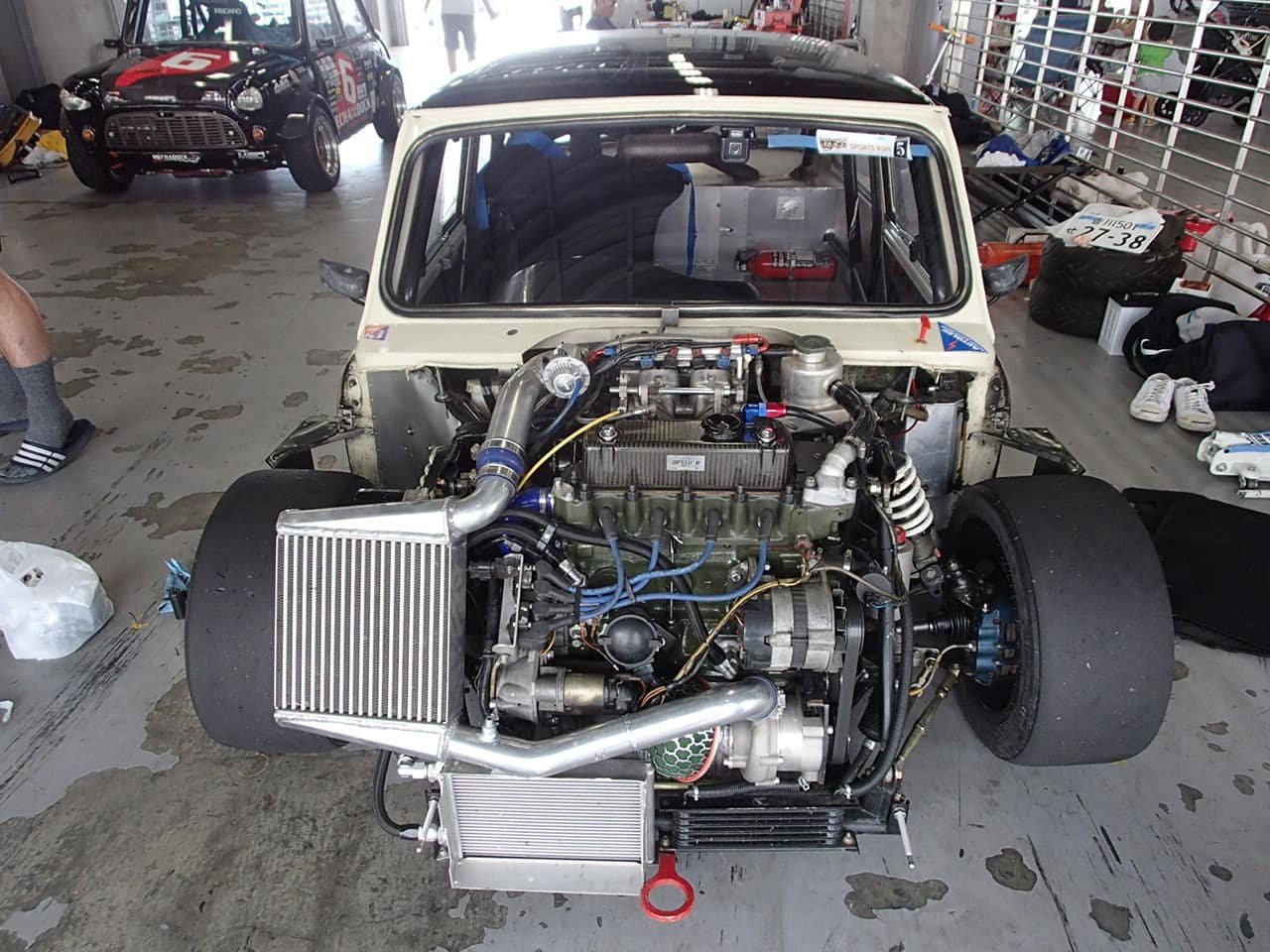
OLYMPUS DIGITAL CAMERA
All you petrolheads will note the big bore supercharger set just above the big racing spec oil cooler at the lower right. The whopping great intercooler is obvious, as are the ultra wide racing slicks. What you can’t see is that the traditional old Austin 1,275cc A-Series engine has been bored and stroked to 1,460cc. The driver of this car told me that it’s putting out over 200 horse power. About a 400% increase over stock.
This car, race number 55 in the unlimited class,
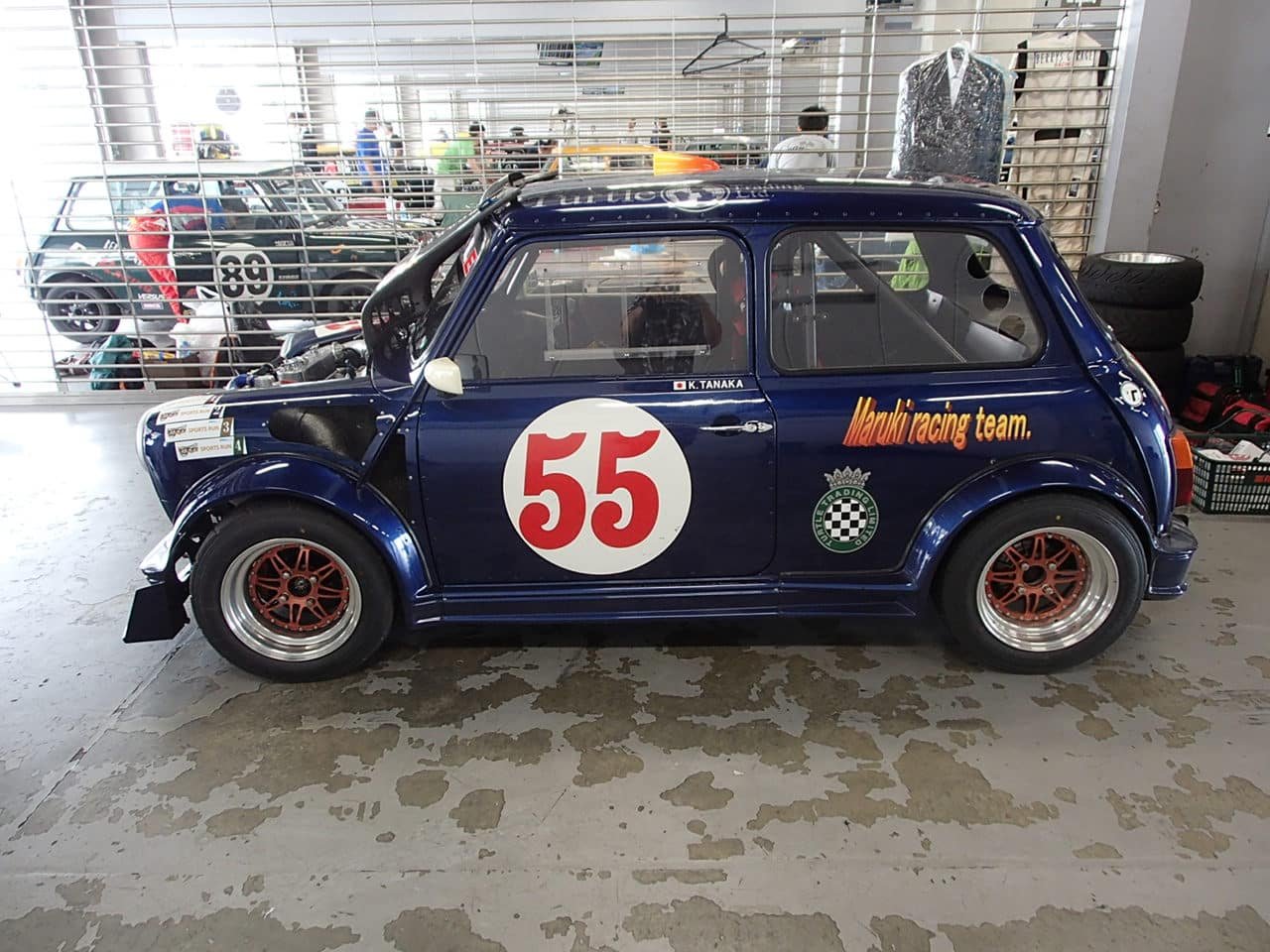
OLYMPUS DIGITAL CAMERA
is also bored and stroked (to 1,430cc), but here the owner/driver went for turbo-charging.
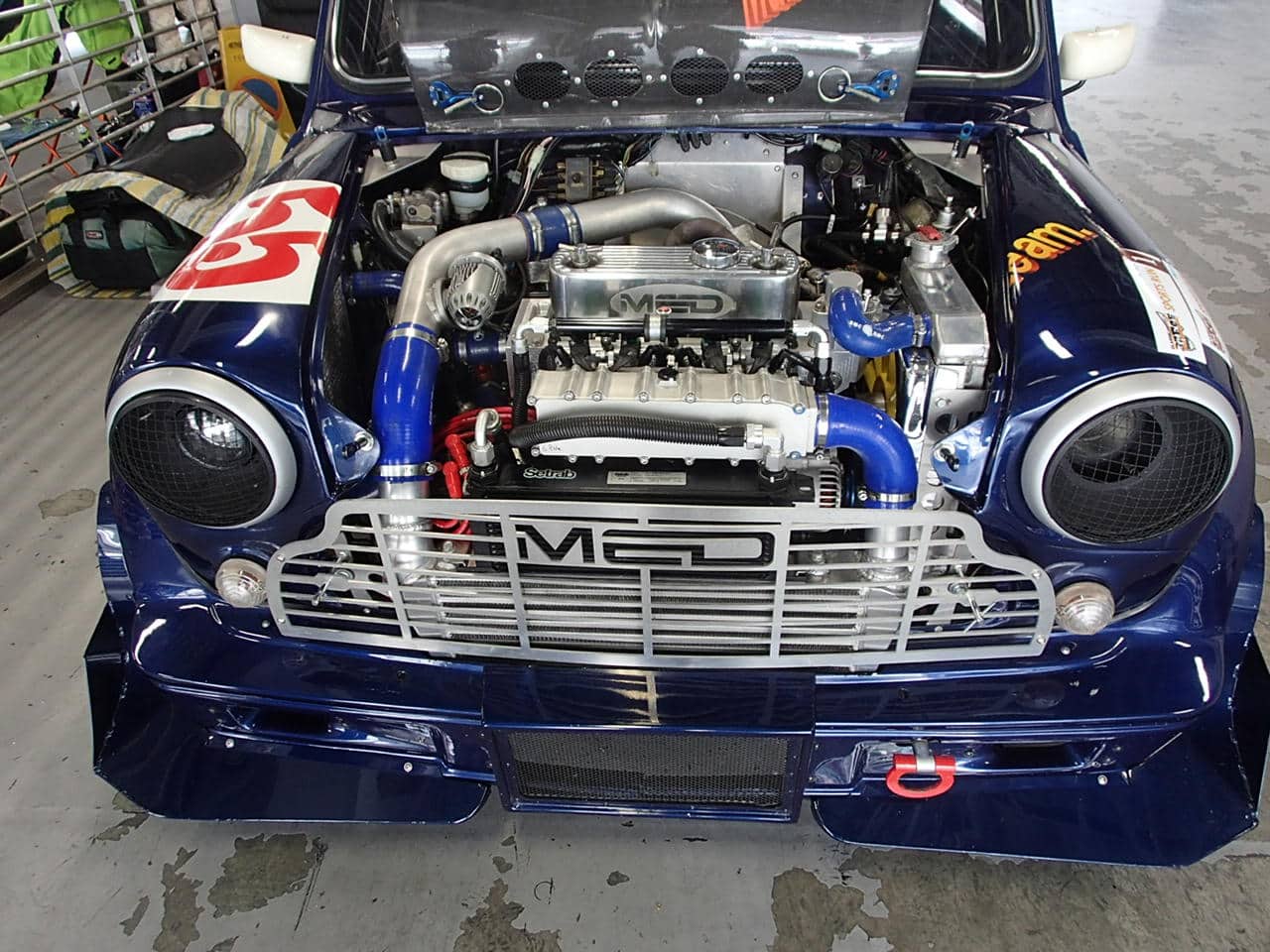
OLYMPUS DIGITAL CAMERA
And all in a super clean package. This Mini track car was a true work of art. The driver told me the engine is putting out well over 200 horsepower. Well….there’s no doubting from me on that.
An interesting feature of the engine build that he has done here is the delightfully twisted exhaust header.
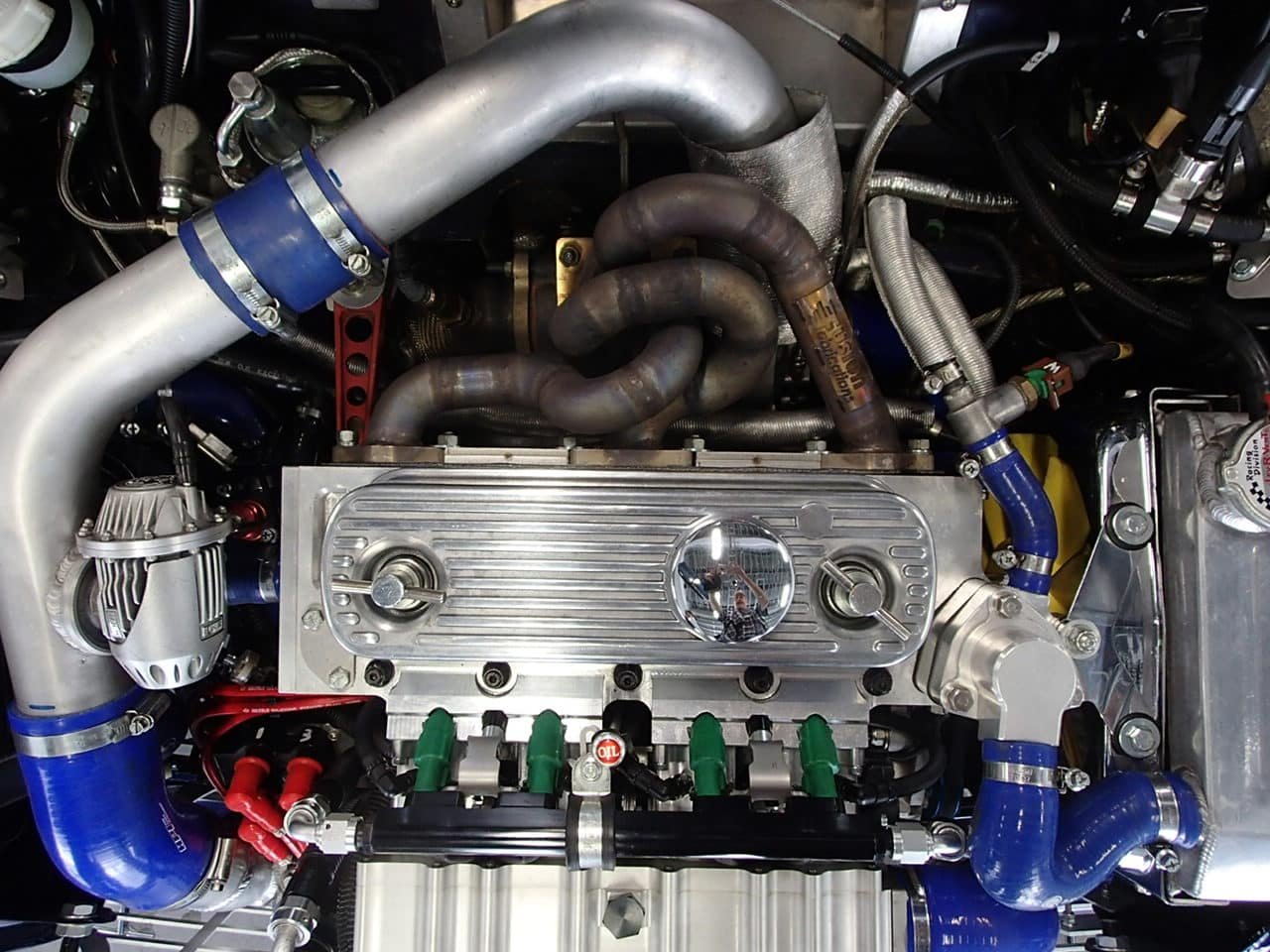
OLYMPUS DIGITAL CAMERA
And, no, it is not an illusion, there are only three pipes coming out of this four cylinder engine; cylinders two and three are both exhausting into the center pipe.
Now, my buddy, who was racing that day in the 1.3 Injection class, let me know a few track stats about these unlimited tuned classic Minis and the one that really made me see what these tuners have achieved with their cars is the simple fact that, on the straight at the Speedway, my friend’s tuned car will hit just over 150km/h (nearly 95mph) whereas these unlimited guys are topping 200km/h (125mph).
Impressive, yes, but I gotta tell ya, sitting at first corner for the final unlimited race, I saw two guys snap oversteer
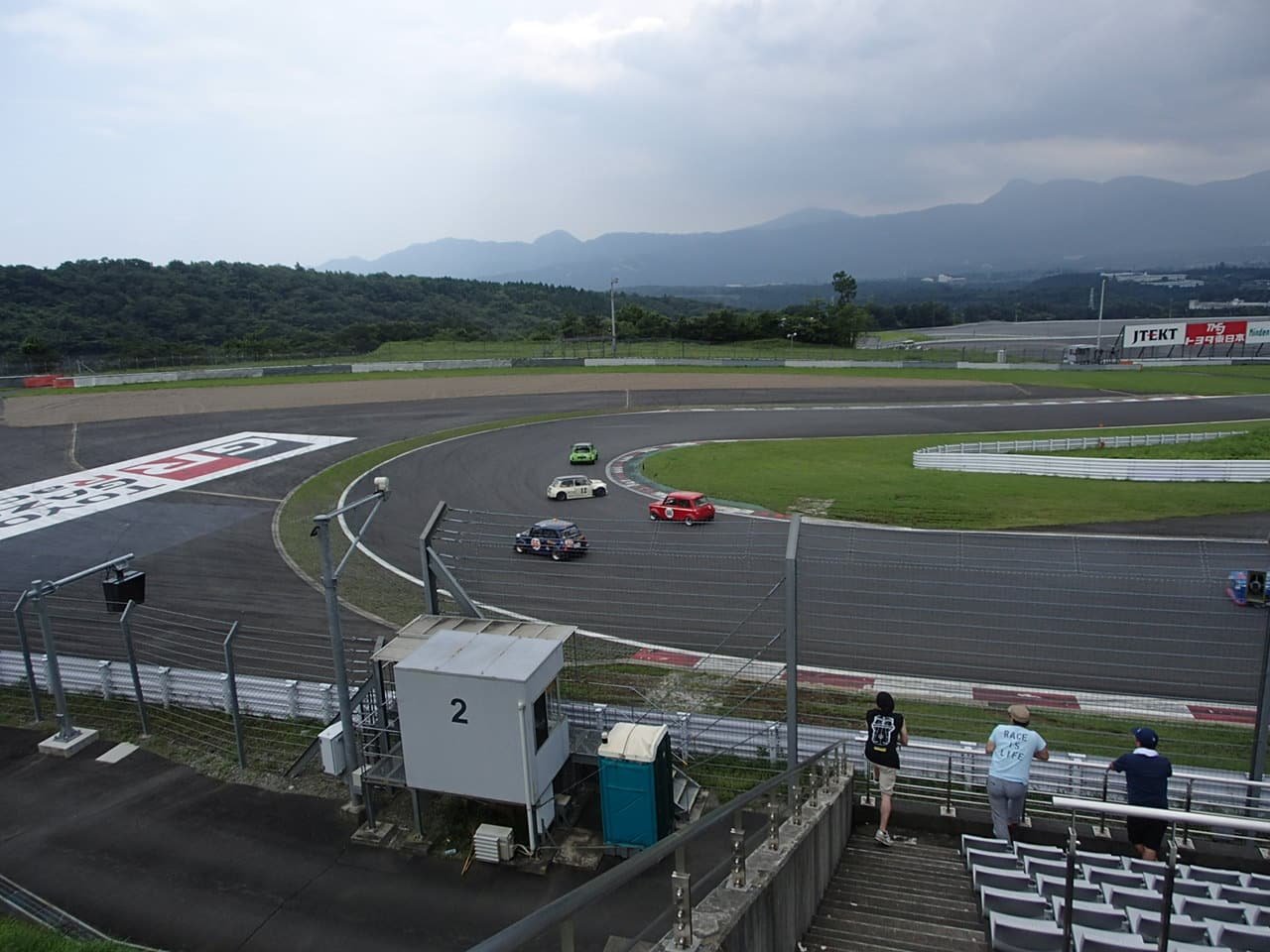
OLYMPUS DIGITAL CAMERA
and one guy just plow through the corner due, I guess, to just coming in too fast; and it got me to thinking: “Could it be the case that a chassis that was designed for about 50 to 60 horsepower just reaches a natural mechanical limit at a certain point, no matter what the stiffening and other re-enforcement work is done on it?”
You serious racer guys out there can tell me better, but I’ve never seen other FF track cars, like Toyota Starlets and Toyota AE-111 Levins, snap oversteer like that. Of course, I’ve seen plenty of mid-ship cars get skittish at First Corner, and I’ve seen rear-engine Porsches spin right around; all understandable with their rear weight bias. But a front-engine, front-wheel-drive car behaving like that was a first for me.
Now my buddy’s car is more like what I’d like to have if I decide to buy a classic Mini here in Japan.
Have a look at it here in the pit before the first day qualifying race:
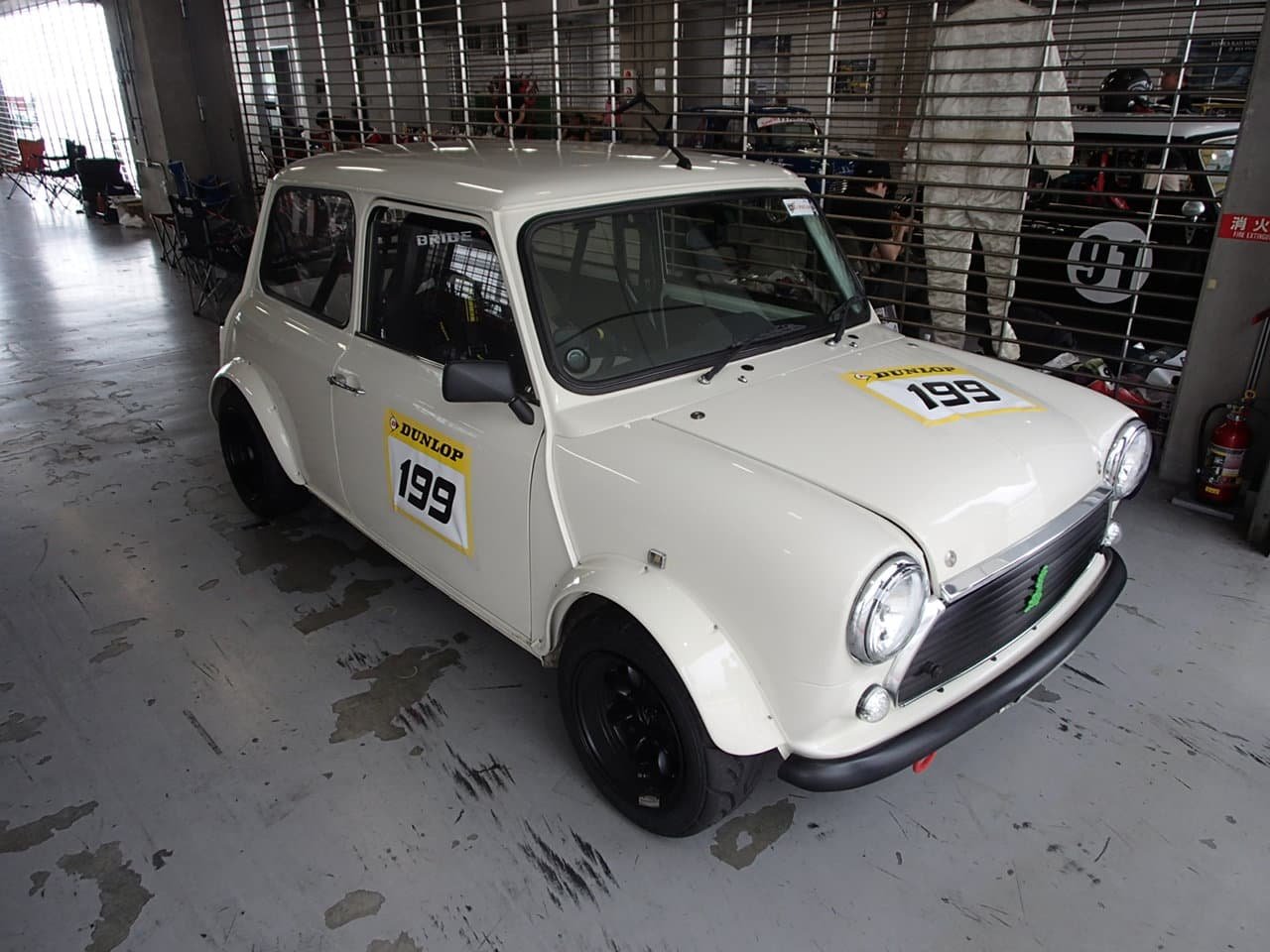
OLYMPUS DIGITAL CAMERA
This car is a licensed road car. It is his daily driver. And it leads me to recall that I often see Minis here in Japan on the road that are clearly running track mods and are, like this 1998 Mini 1.3, in really fine, clean shape. Japan is definitely the place to look, not only for a good, clean, rust-free classic Mini, but it’s also the place to find tuned Minis that are still street legal and have not been over-the-top modified. We have sourced and shipped a number of the quicker Minis, like this one here and exported them to the US, Canada, Australia, and even back to the UK.
And don’t think it’s strange to export a Mini to England, to the land of its birth. Not at all. In Japan, all Mini owners treasure their cars. They do not thrash them, not that I’ve ever seen. In England? Well, I lived there for six years and I was not impressed with how some guys ran their cars into the ground. It was while living in the UK that I learned the expression: “to thrash a motor.” Enough said. I’ll stop. But you should definitely look at a direct export from Japan if you are thinking of buying a classic Mini.
Most of the many good Minis for sale in Japan are Right Hand Drive (RHD), but we’ve got a number of Left Hand Drive (LHD) Minis that come up for sale here, too, both at the dealers and at the Japanese used car auctions. In fact, there are lots, lots of classic Minis for sale here in Japan.
Getting back to my friend’s pride and joy:
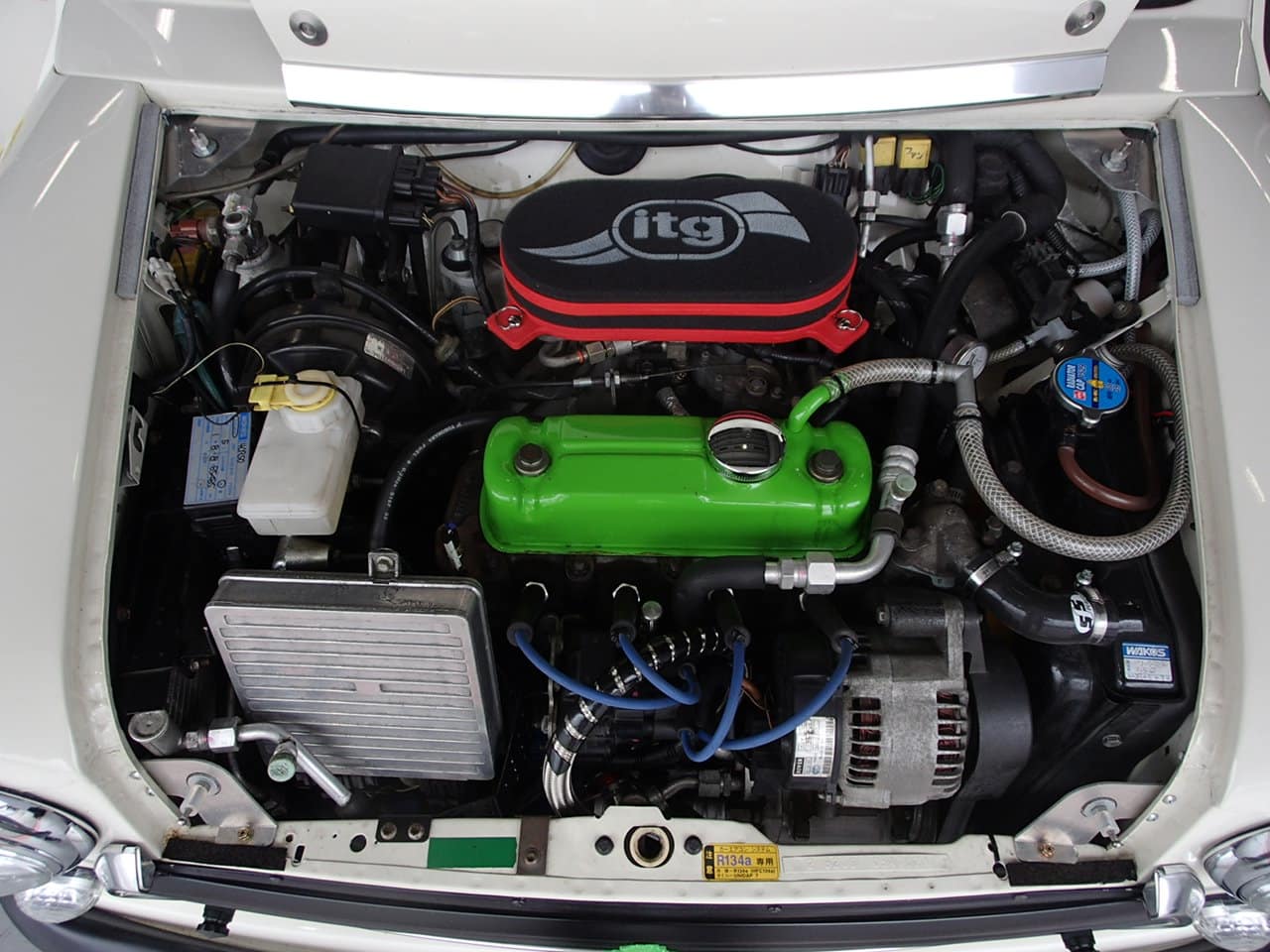
OLYMPUS DIGITAL CAMERA
Bore and stroke are stock, but he is running high compression pistons (11.3:1), has installed a high-lift cam, fuel pressure regulator,
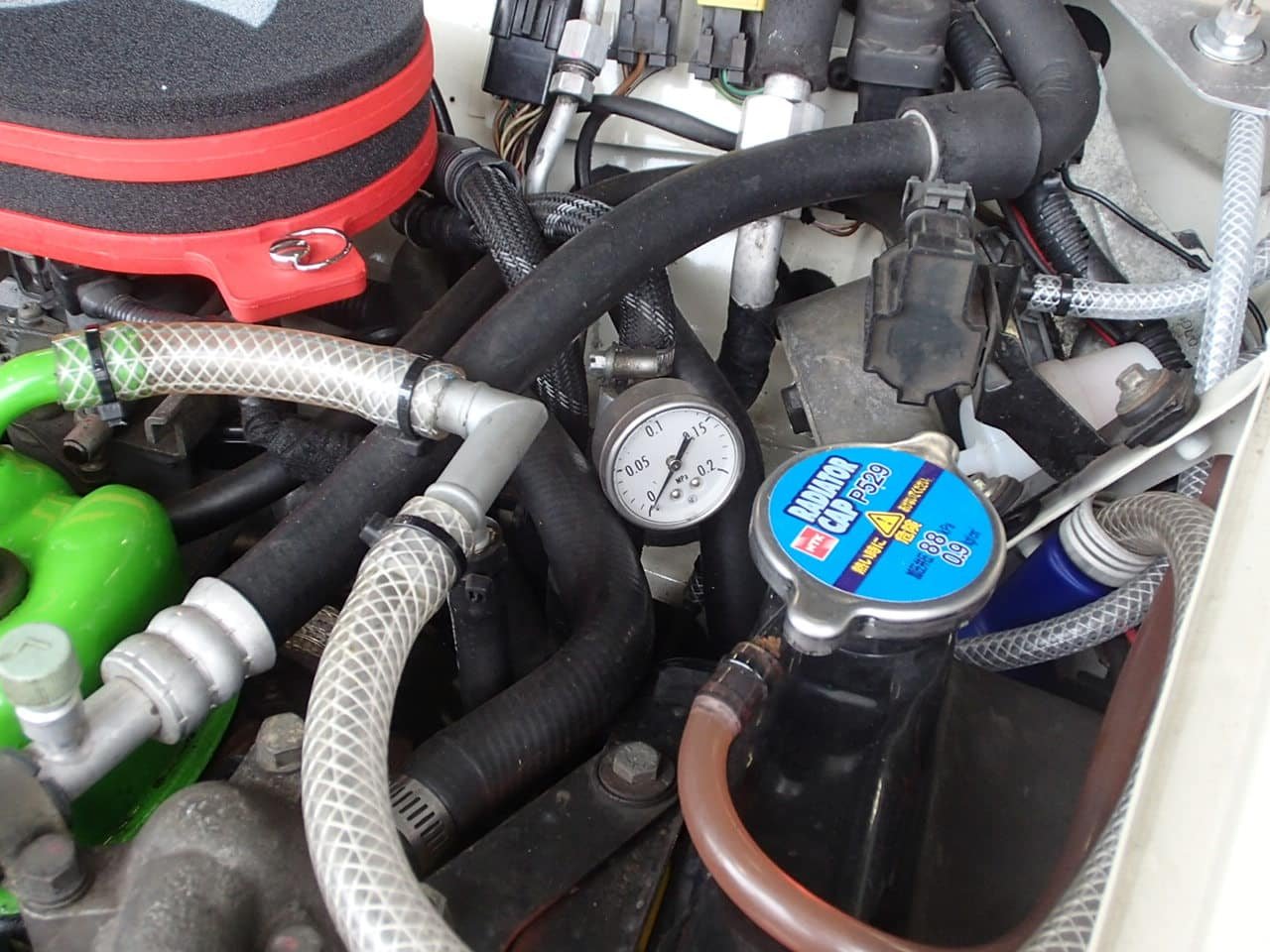
OLYMPUS DIGITAL CAMERA
header (wrapped), free-flow sub-silencer, free-flow muffler (yes, the car’s exhaust note is just great), oil cooler, free-flow intake filter, and more. He’s got wide tires (165/55R12 Advans) on the car and a six point roll cage inside. He’s put high impact, shatter resistant glass in all windows, and installed a fiberglass light-weight bonnet. All the passenger seats have been removed (but he’s got mounting points for a front passenger seat if need be), and most sound proofing has been removed. The keener tuners among you will have noticed from these engine bay photos that my friend has decided to keep the air conditioning system, a must item for town driving in this part of Japan.
I could barely get my big European butt into the super tight racing seat:

OLYMPUS DIGITAL CAMERA
My friend’s previous car was a 4.6 liter Lincoln Town Car. I kid you not. He had it for three months and had to give it up because it was just too big for Japan’s in-town roads. The man’s a nut!
Before that he had a 1976 Nissan Sunny 1.3, which he also raced. So, he’s not that much of a nut. Here he is ripping into First Corner at Fuji Speedway and trying an inside pass:
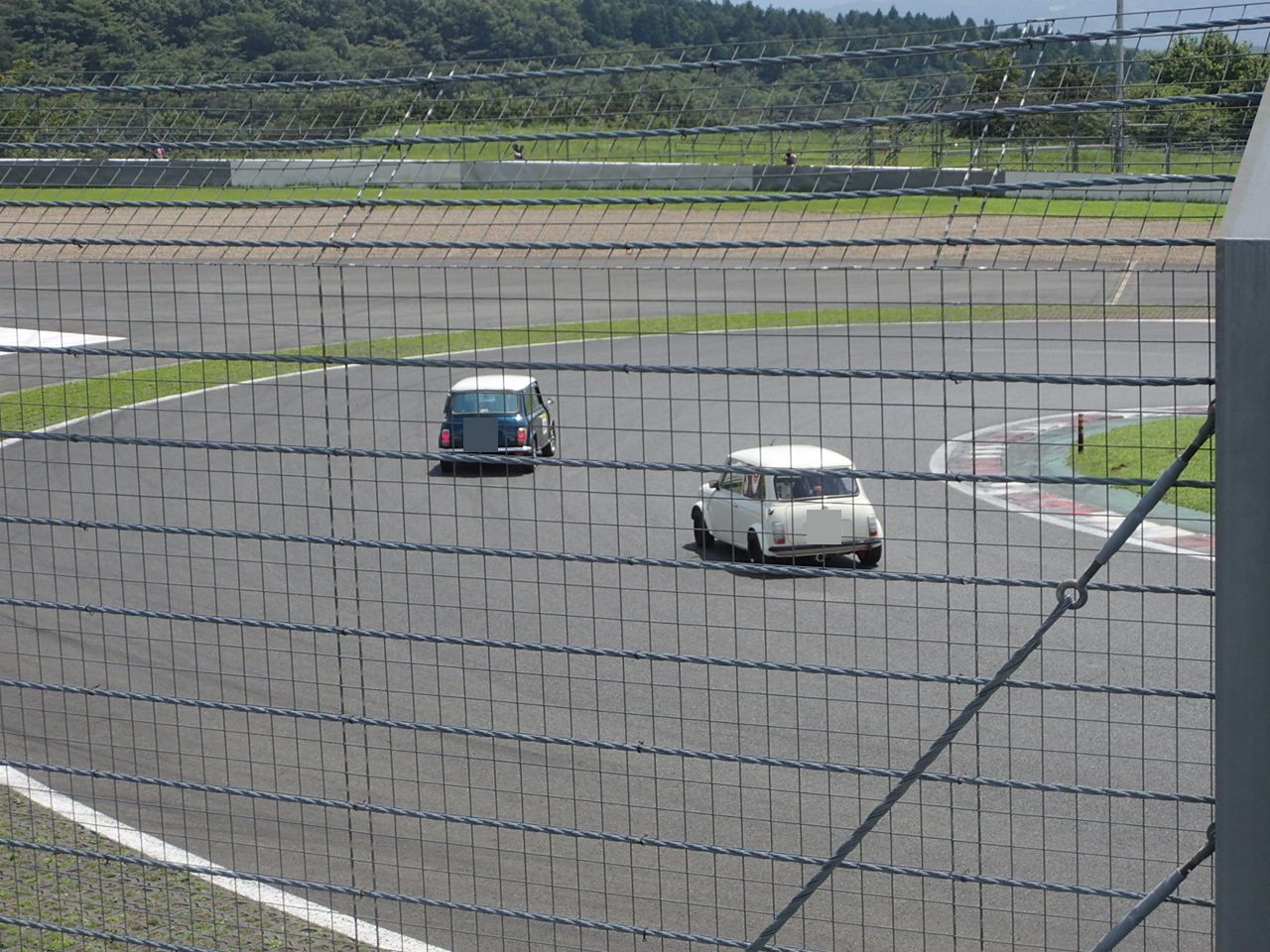
Overall it was a weekend of races, with cars in the 1.3 liter injection class, the 998cc carburetor class (and that was a spectacular race with a near photo finish), the unlimited “Moto” class, and others. Nobody got hurt, although there were a few prangs, with some good old classic Minis being towed off as hors de combat:
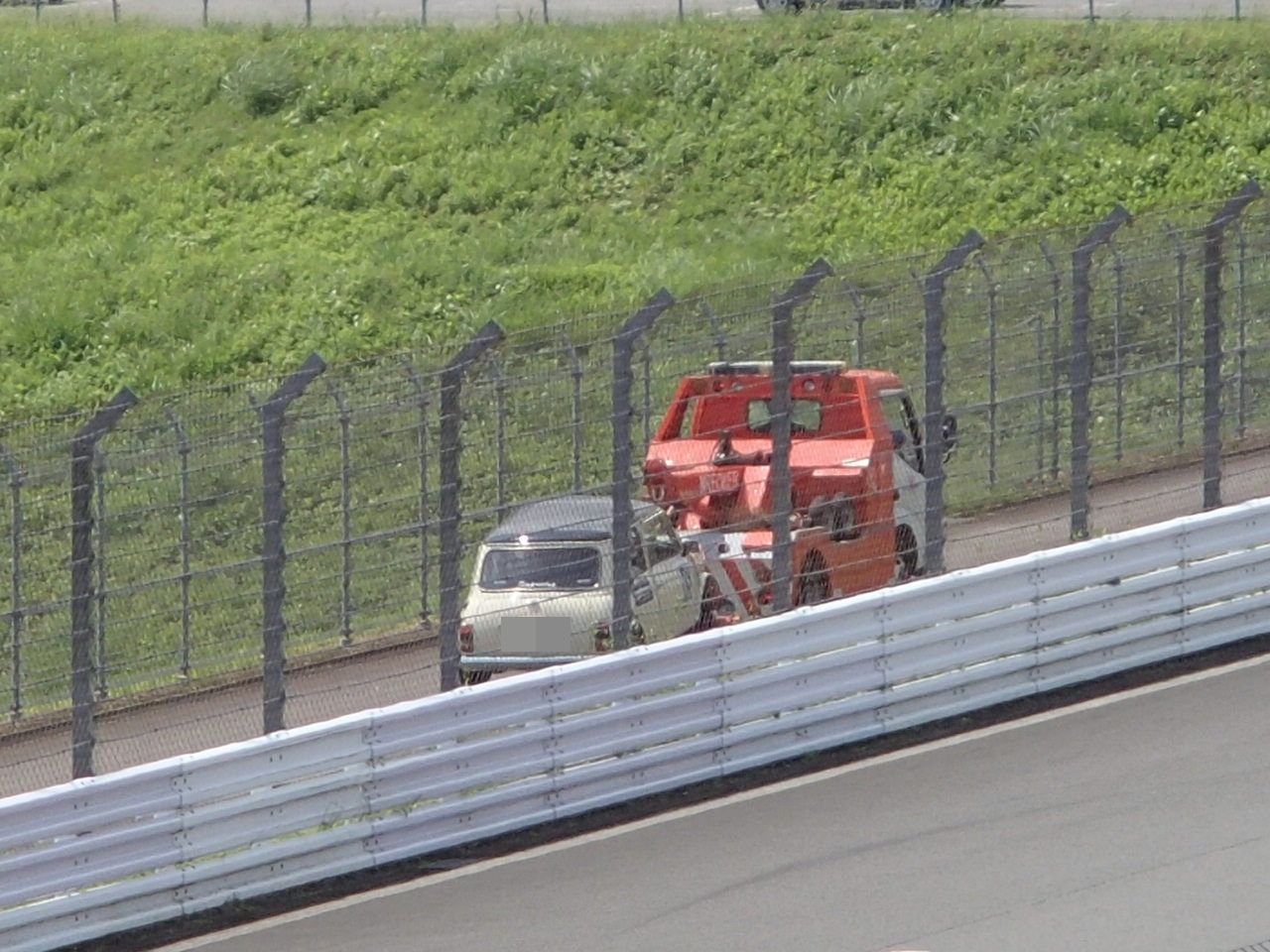
So Many Minis (and Mini Variants) to See
But for me, one of the most fun things at the Classic Mini Festival 2019 here in Japan was the chance to see so many beautiful and treasured Minis and Mini variants, like this lovely 1968 Riley Elf which the present owner imported to Japan from Australia.
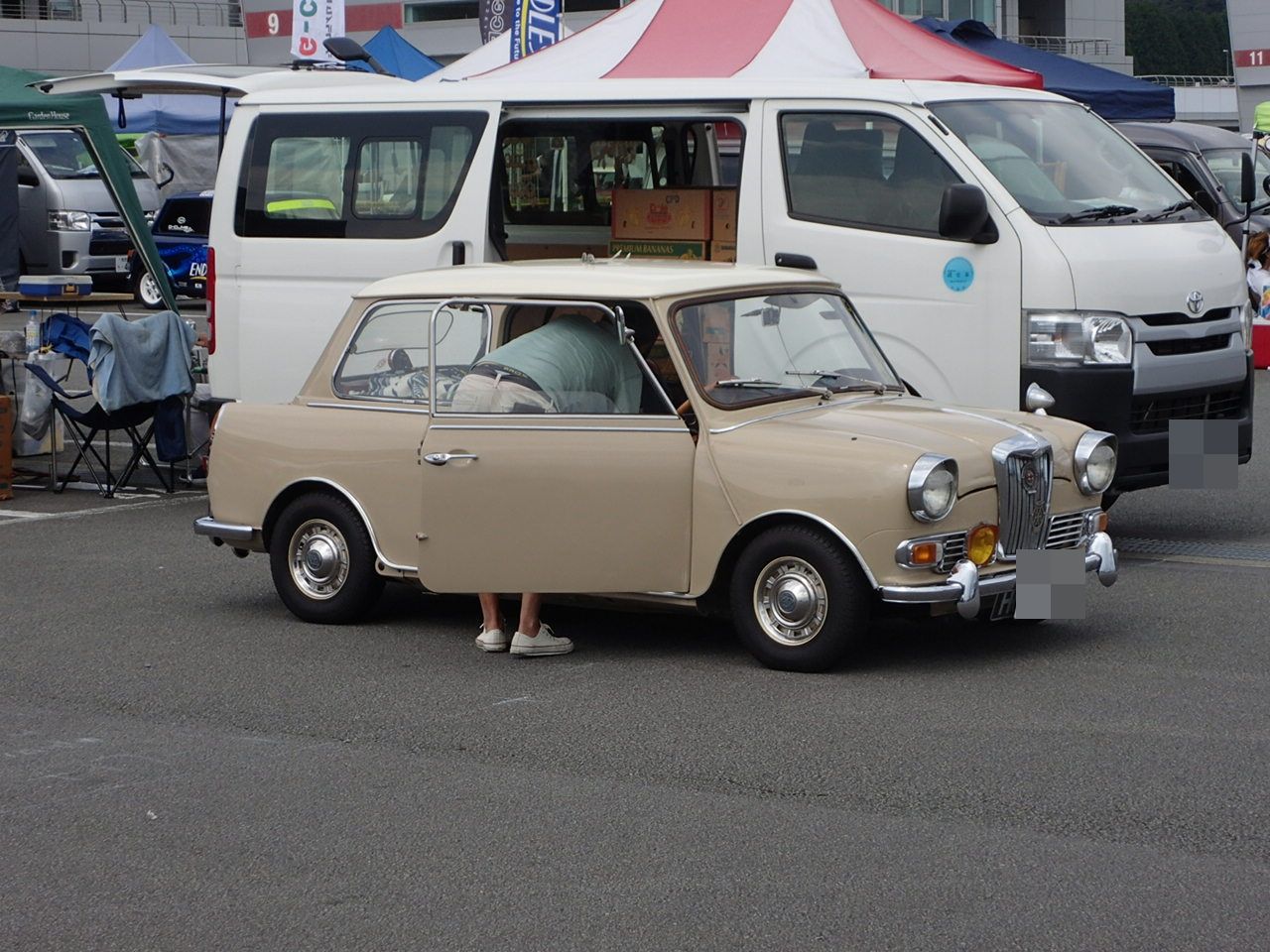
There was even the brother of the Elf, a Wolseley Hornet, which was racing in the Historic class. The old boy was last throughout the whole race, then in the final lap, he found some of his bygone grunt, and passed the car in front of him.
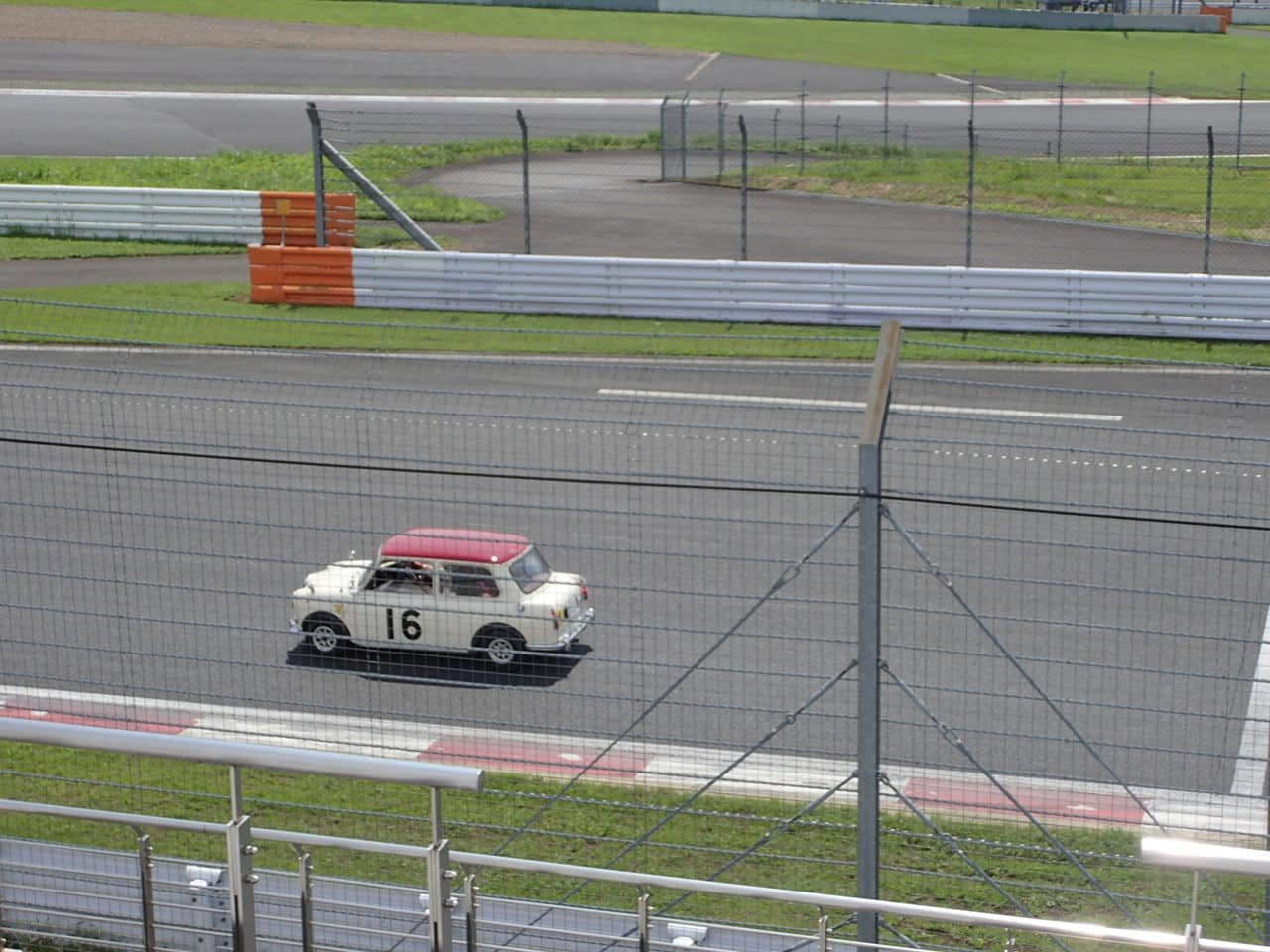
OLYMPUS DIGITAL CAMERA
Don’t write those old guys off too casually, My Dear Fellow, not too casually.
I saw cars there at the Speedway, variants of the classic Mini, that I didn’t know existed, like this 1970, all original, Unipower GT:

And how about a four-door classic Mini?
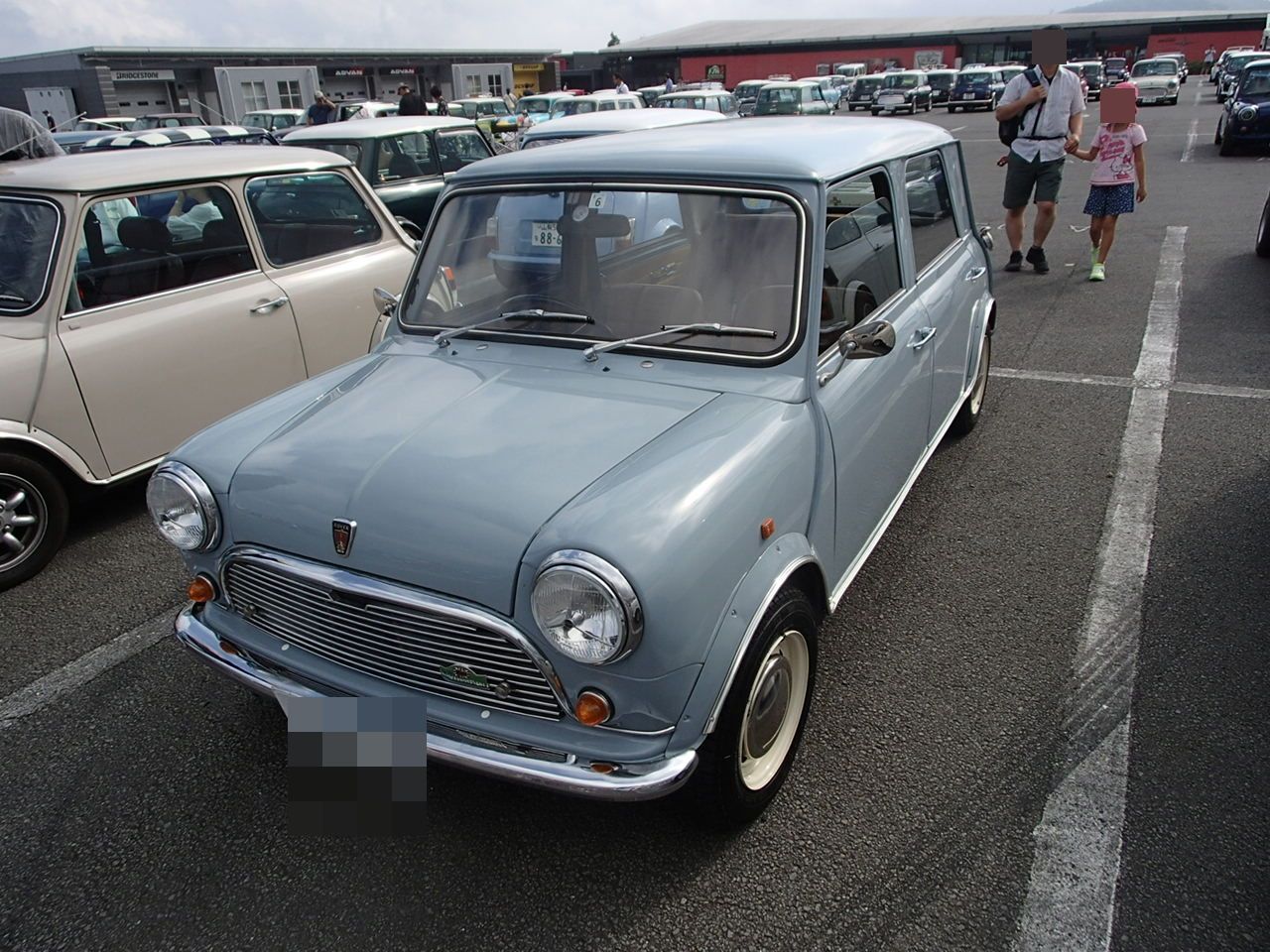
There was just so much to see. Minis were everywhere. At the Speedway, on my way to the Speedway, on my way home from Fuji Speedway. Minis were even hiding out on odd bits of grass field and sneaking up behind me in deserted parking lots:
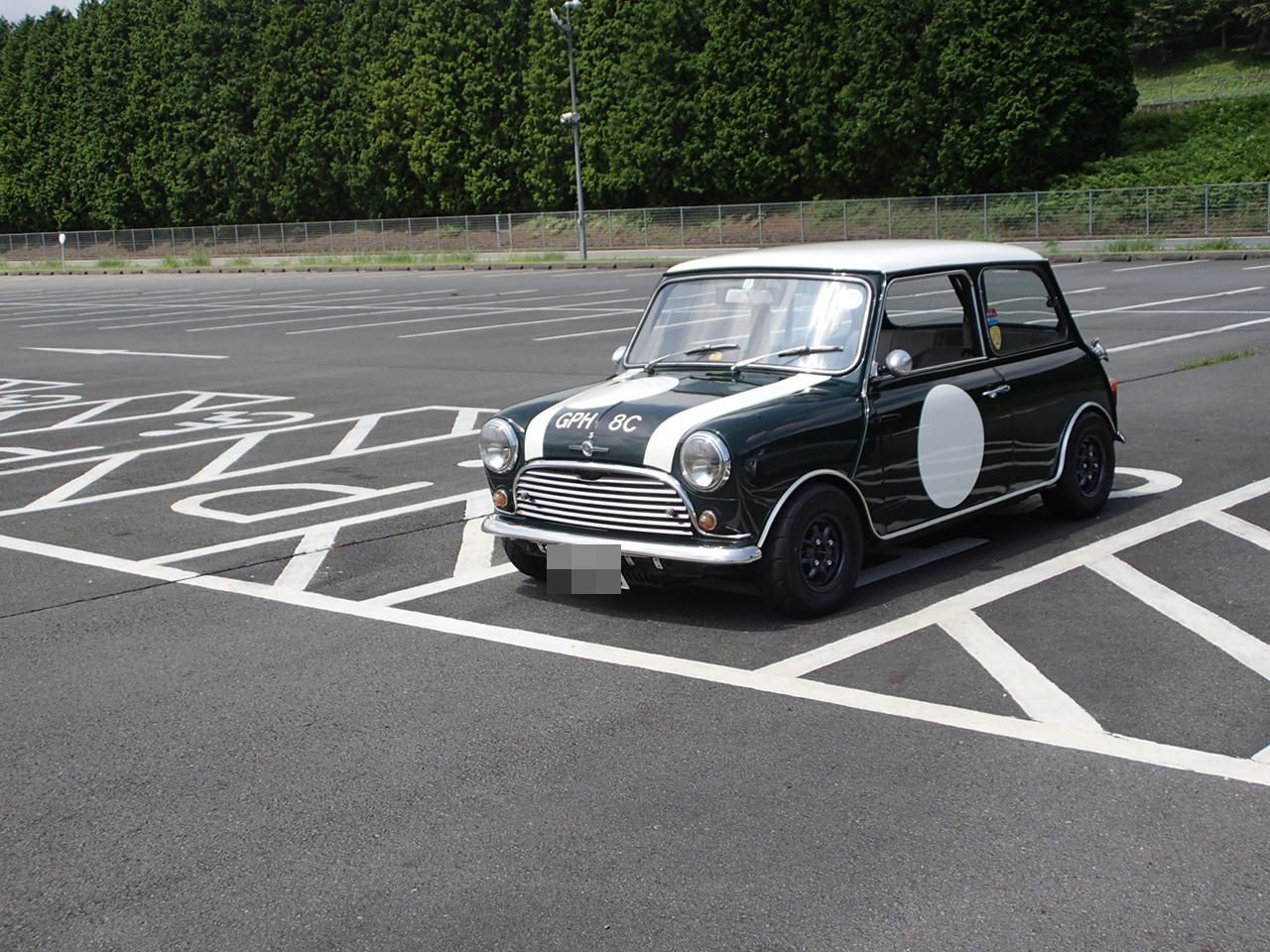
It was a lovely weekend among many of the classic Minis we have here in Japan. And now let me finish this post and leave you with the following three photographs. I’m sure you’ll agree with me that further comment is unnecessary.
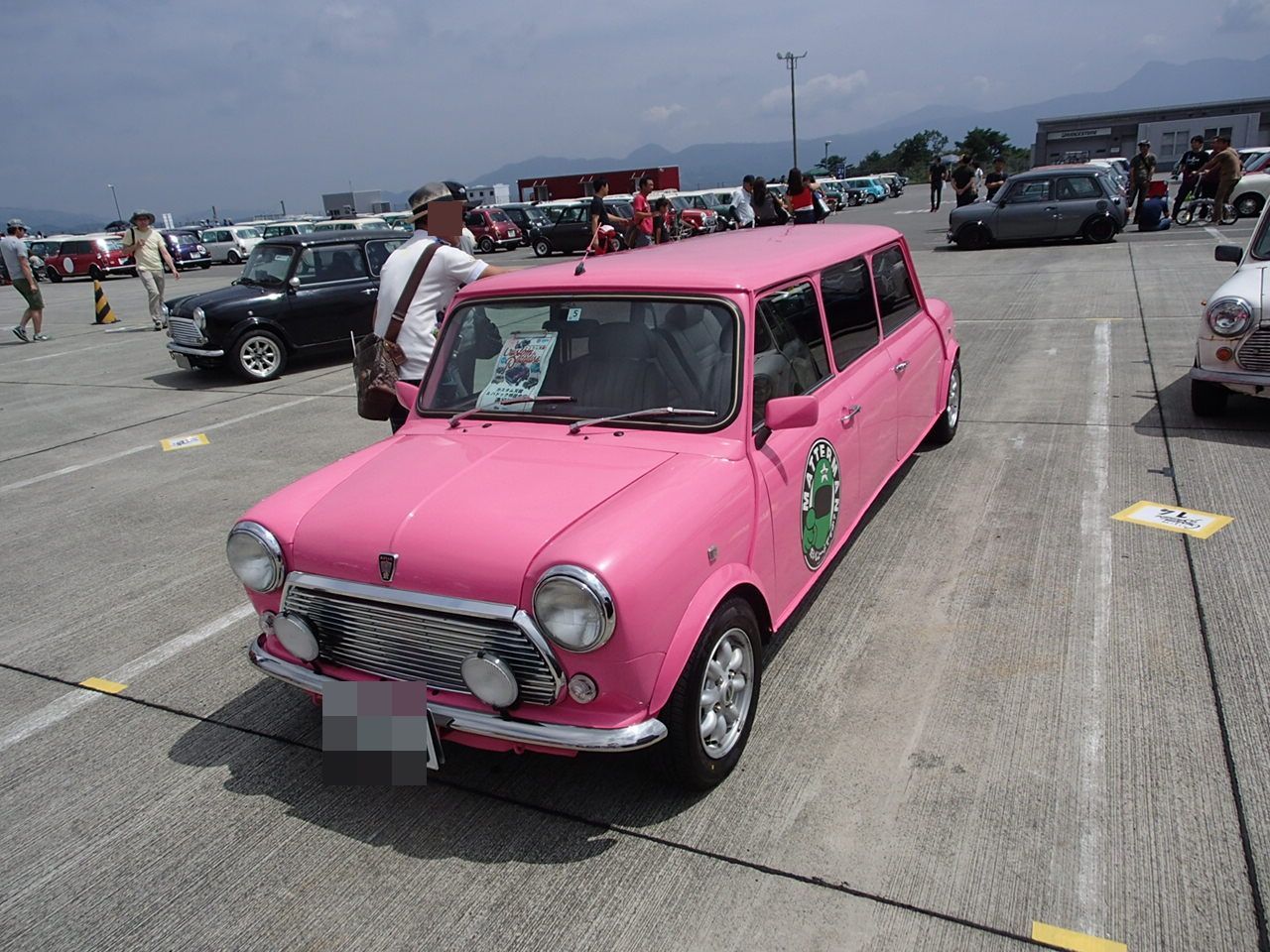
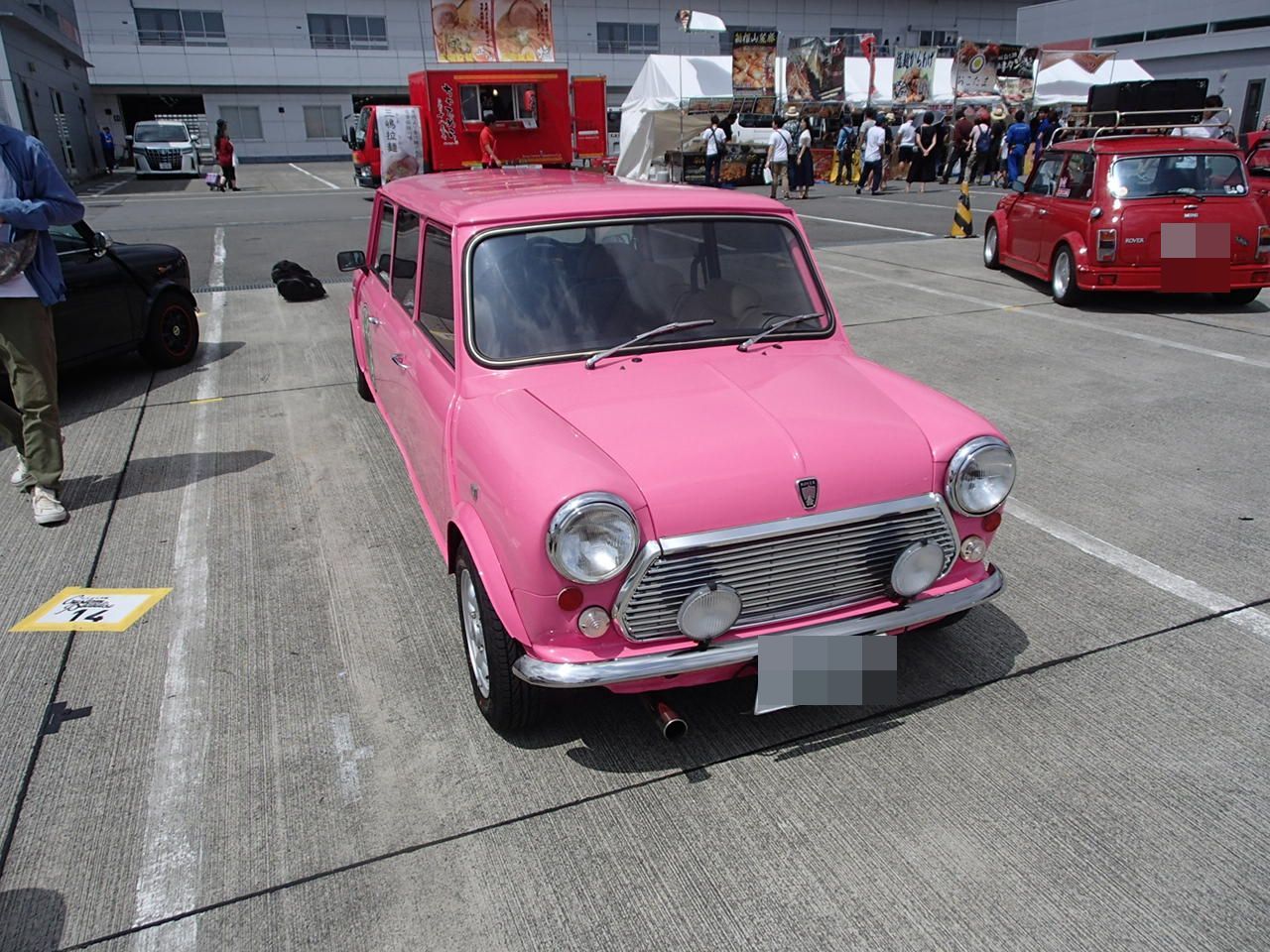

OLYMPUS DIGITAL CAMERA



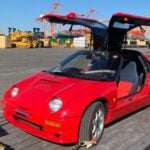





Very cool article, Dave, and I love the photos!
Wish I could have been there.
Hi Jim,
Thanks for your comment.
It was truly a great weekend. Minis everywhere. Really loved cars. Before I got involved in this business of exporting cars from Japan, I would never have thought that there are so many good British and European cars to export from Japan. But it’s because people who own a foreign car here usually treasure it so much; they keep these cars in such good shape. The cars at the Mini weekend were just so loved, so clean, so treasured. When I lived in the UK, a Mini was considered not much more special than a Ford Fiesta or a Rover Metro; it got no special treatment or care from its British owner, and lots of the Minis in the UK sure started to look neglected pretty quick. Night and day difference with how these cars are treated in Japan. So now, if I were still living in England and wanted a clean classic Mini, I’d look at re-importing one back to the UK from Japan. I could then be pretty sure that I’d be getting a loved, treasured car. Re-importing a classic car back to Europe or the UK from Japan is not as crazy as it sounds at first hearing.
Cheers,
Dave